Conference Presentations by Lisbet Thoresen, Temecula, CA, USA
Seventeenth Annual Sinkankas Symposium - Agate Chalcedony, 2021
The theme of the Seventeenth Annual Sinkankas Symposium is Agate and Chalcedony (Virtual event, A... more The theme of the Seventeenth Annual Sinkankas Symposium is Agate and Chalcedony (Virtual event, April 8 - June 7, 2021). Lisbet Thoresen and Stuart Overlin, Editors. The proceedings volume features eleven articles and photo essays by noted specialists on diverse topics and renowned lapidary artists. Specifications: 124 pp, 186 full color photos and illustrations, soft cover, perfect binding. Published June 1, 2021. ISBN 978-0-9915320-5-6

Egypt’s Red Sea island of Zabargad, also called St. John’s Island, is arguably the world’s most f... more Egypt’s Red Sea island of Zabargad, also called St. John’s Island, is arguably the world’s most famous source of gem olivine, or peridot. Both the island and its eponymous gemstone were called “topazos” by ancient writers. Although much has been written about Zabargad’s unusual geology and modern mine workings, an ancient peridot mine had not been verified until a geo-archaeological expedition to the island in 2010 confirmed the existence of ancient mine workings and associated ruins of buildings and a water well. In the first of two companion articles, the findings from this expedition are discussed in relation to literary references on the subject and the relationship between Zabargad and Berenike, the Ptolemaic-Roman port city on the Egyptian mainland opposite the island and a major emporium for the maritime trade with eastern Africa, the Persian Gulf and India. Peridot was imported via this port-of-entry into the Graeco-Roman world, where it was used primarily for ring stones. In the second article, the historiography of ancient literary sources on both the identity and geographic origins of the gem known today as peridot is examined with reference to the 2010 expedition to Zabargard and a survey of extant ancient engraved gems carved from peridot. Among other possible sources of peridot in antiquity is a second Red Sea island called “Cytis” by the Roman encyclopedist Pliny the Elder (d. AD 79). The association of Cytis with modern Kod Ali Island, located a few kilometers off the coast of Eritrea, is also discussed.

The origins and identities of the gem minerals known in antiquity have been construed primarily f... more The origins and identities of the gem minerals known in antiquity have been construed primarily from ancient literary sources. Some of the most important texts are not preserved in the translation of original manuscripts but are versions produced later, often several centuries later. They may survive only as fragmentary works or paraphrased in the works of other writers. Sometimes they survive in successive editions which bear accumulated errors and defects iterated over centuries. Some of the most significant works and problems of their handling in translation have been discussed. Attention has been devoted especially to lexical problems associated with trying to reconcile ancient and modern mineral taxonomies, inconsistent usage of gem terms, some of which are deprecated, and contemporary bias of translators.
Examination of approximately 1,100 objects representing the range of lapidary materials known to ancient gem cutters provided objective reference to consider some of the most troublesome gemstone identities and presumed gemstone origins that have come to be generally accepted as true. Empirical observations of the gems examined, archaeology, and the discovery of new gem sources in recent decades suggest that updated translations of some important treatises are needed, especially Books 36-37 of Pliny the Elder’s »Natural History«, which was published more than 50 years ago.
Most of the gems examined came from private or museum collections whose provenience dates between the 17th and 20th centuries. Lacking known archaeological context in most instances hinders tracing the mechanism of transmission or the path traveled between a raw lapidary material’s origin and its eventual deposition as a fashioned object in its date- and place-specific cultural setting.
Papers by Lisbet Thoresen, Temecula, CA, USA
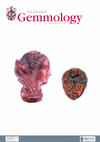
The Journal of Gemmology, 2013
The results of quantitative electron microprobe analyses and observations of gemmological propert... more The results of quantitative electron microprobe analyses and observations of gemmological properties and microscopic features are presented for 11 garnets of ancient Greek, Etruscan and Roman manufacture. In addition to chemical data, the gemmological properties of the Getty Museum garnets are presented, including refractive index, density and inclusions. According to their chemical composition and gemmological properties, the 11 garnets were subdivided into four groups: Cr-poor pyrope, Mn-rich almandine, Ca-rich almandine and intermediate pyrope-almandine. Combining the data of the 11 Getty garnets with published analyses of 26 Greek and Roman garnets from ancient jewellery and glyptic, the chemical distribution pattern of all 37 garnets expanded the boundaries of the established four groups and added a fifth garnet group comprising Mn-poor almandine. The compositional fields for these five groups are compared with data reported for Early Medieval garnets, mostly from Merovingian cloisonné jewellery. The chemical composition and physical properties of the garnets yield insights into possible sources of rough gem material, networks of trade/transmission in the ancient world, and associations between finished objects now dispersed in different collections.
Book Reviews by Lisbet Thoresen, Temecula, CA, USA

The Journal of Gemmology, 2018
A review of a volume of essays on engraved gems in The Hague Pennningkabinet, now housed at the R... more A review of a volume of essays on engraved gems in The Hague Pennningkabinet, now housed at the Rijksmuseum van Oudheden (RMO). The assembled collections were formerly in Leiden and then Utrecht before returning to Leiden and a new permanent home at the RMO in 2013. Three years later a conference and exhibition were organized to celebrate the return of the gem collection to public view after a long absence. Eleven articles based on the conference program plus three additional articles on previously unpublished material were prepared on selected objects from the collection. Published in 2017, this volume covers the material culture of epochs dating from mid-third millennium Mesopotamia to modern Europe. The contributors include gem scholars renowned for their subject specialties: Rika Gyselen, Jørge Hein, Martin Henig, Marianne Kleibrink, Valentin Kockel, Diederik J.W. Meijer, Gertrud Platz-Horster, Attilio Mastrocinque, Marcia Pointon, Christine Swaving, Carina Weiss, Ben van den Bercken, Claudia Wagner and Hanco Zwaan. This conference volume is the first detailed study of the gems in the Penningkabinet since the catalogue raisonné was published by Marianne Maaskant-Kleibrink in 1978.
Talks by Lisbet Thoresen, Temecula, CA, USA
Announcement
Sunday, October 23, 2022 | 2 PM -- The People Behind the Stones, by Dr. Kenneth Lapa... more Announcement
Sunday, October 23, 2022 | 2 PM -- The People Behind the Stones, by Dr. Kenneth Lapatin, is one in a series of public lectures related to the exhibition, Making an Impression, The Art and Craft of Ancient Engraved Gemstones, on view at the Michael C. Carlos Museum of Emory University, Atlanta, August 27 - November 27, 2022. This lecture series is accessible virtually via Zoom. The John Laszlo, M.D. Excalibur Lecture was established through the generosity of Dr. Laszlo's family and friends in honor of his retirement from the American Cancer Society.
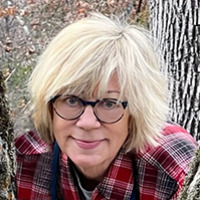



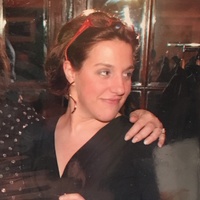

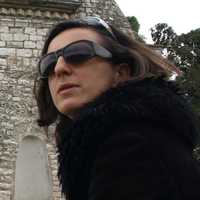


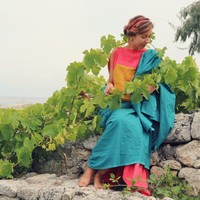

Uploads
Conference Presentations by Lisbet Thoresen, Temecula, CA, USA
Examination of approximately 1,100 objects representing the range of lapidary materials known to ancient gem cutters provided objective reference to consider some of the most troublesome gemstone identities and presumed gemstone origins that have come to be generally accepted as true. Empirical observations of the gems examined, archaeology, and the discovery of new gem sources in recent decades suggest that updated translations of some important treatises are needed, especially Books 36-37 of Pliny the Elder’s »Natural History«, which was published more than 50 years ago.
Most of the gems examined came from private or museum collections whose provenience dates between the 17th and 20th centuries. Lacking known archaeological context in most instances hinders tracing the mechanism of transmission or the path traveled between a raw lapidary material’s origin and its eventual deposition as a fashioned object in its date- and place-specific cultural setting.
Papers by Lisbet Thoresen, Temecula, CA, USA
Book Reviews by Lisbet Thoresen, Temecula, CA, USA
Talks by Lisbet Thoresen, Temecula, CA, USA
Sunday, October 23, 2022 | 2 PM -- The People Behind the Stones, by Dr. Kenneth Lapatin, is one in a series of public lectures related to the exhibition, Making an Impression, The Art and Craft of Ancient Engraved Gemstones, on view at the Michael C. Carlos Museum of Emory University, Atlanta, August 27 - November 27, 2022. This lecture series is accessible virtually via Zoom. The John Laszlo, M.D. Excalibur Lecture was established through the generosity of Dr. Laszlo's family and friends in honor of his retirement from the American Cancer Society.
Examination of approximately 1,100 objects representing the range of lapidary materials known to ancient gem cutters provided objective reference to consider some of the most troublesome gemstone identities and presumed gemstone origins that have come to be generally accepted as true. Empirical observations of the gems examined, archaeology, and the discovery of new gem sources in recent decades suggest that updated translations of some important treatises are needed, especially Books 36-37 of Pliny the Elder’s »Natural History«, which was published more than 50 years ago.
Most of the gems examined came from private or museum collections whose provenience dates between the 17th and 20th centuries. Lacking known archaeological context in most instances hinders tracing the mechanism of transmission or the path traveled between a raw lapidary material’s origin and its eventual deposition as a fashioned object in its date- and place-specific cultural setting.
Sunday, October 23, 2022 | 2 PM -- The People Behind the Stones, by Dr. Kenneth Lapatin, is one in a series of public lectures related to the exhibition, Making an Impression, The Art and Craft of Ancient Engraved Gemstones, on view at the Michael C. Carlos Museum of Emory University, Atlanta, August 27 - November 27, 2022. This lecture series is accessible virtually via Zoom. The John Laszlo, M.D. Excalibur Lecture was established through the generosity of Dr. Laszlo's family and friends in honor of his retirement from the American Cancer Society.